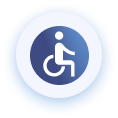10 Day Weather- Selma, North Carolina
Tonight
Night
28°2%Clear skies. Low 28F. Winds light and variable.
Heads-up
Days Of Rain, Snow To Worsen Flooding
Wed 17
58°/36°2%
Day
58°2%Intervals of clouds and sunshine in the morning with more clouds for later in the day. High 58F. Winds SW at 5 to 10 mph.
Night
36°6%Considerable cloudiness. Low 36F. Winds light and variable.
Thu 18
64°/57°68%
Day
64°68%Considerable cloudiness. Occasional rain showers in the afternoon. High 64F. Winds ESE at 5 to 10 mph. Chance of rain 70%.
Night
57°90%Periods of rain. Low 57F. Winds S at 10 to 15 mph. Chance of rain 90%. Rainfall around a half an inch.
Fri 19
63°/30°24%
Day
63°24%Partly cloudy skies. Morning high of 63F with temps falling to near 50. Winds W at 10 to 20 mph.
Night
30°3%A mostly clear sky. Low near 30F. Winds light and variable.
Sat 20
53°/35°3%
Day
53°3%Sunny skies. High 53F. Winds light and variable.
Night
35°6%Mostly clear skies. Low near 35F. Winds light and variable.
Sun 21
64°/35°6%
Day
64°6%Partly cloudy skies. High 64F. Winds W at 5 to 10 mph.
Night
35°7%Mostly clear skies. Low near 35F. Winds light and variable.
Mon 22
49°/32°9%
Day
49°9%Sunshine and clouds mixed. High 49F. Winds NE at 5 to 10 mph.
Night
32°14%A few clouds from time to time. Low 32F. Winds light and variable.
Tue 23
56°/43°11%
Day
56°11%Intervals of clouds and sunshine. High 56F. Winds W at 5 to 10 mph.
Night
43°16%Partly cloudy skies. Low 43F. Winds light and variable.
Wed 24
65°/42°9%
Day
65°9%Sunshine and clouds mixed. High near 65F. Winds NW at 5 to 10 mph.
Night
42°6%Partly cloudy skies. Low 42F. Winds light and variable.
Thu 25
63°/44°6%
Day
63°6%Sun and a few passing clouds. High 63F. Winds S at 5 to 10 mph.
Night
44°11%Partly cloudy skies. Low 44F. Winds light and variable.
Fri 26
61°/43°7%
Day
61°7%Partly cloudy. High 61F. Winds WSW at 5 to 10 mph.
Night
43°10%A few clouds. Low 43F. Winds light and variable.
Sat 27
59°/43°6%
Day
59°6%Partly cloudy skies. High 59F. Winds WNW at 5 to 10 mph.
Night
43°9%A few clouds from time to time. Low 43F. Winds W at 5 to 10 mph.
Sun 28
59°/35°12%
Day
59°12%Intervals of clouds and sunshine. High 59F. Winds WNW at 10 to 15 mph.
Night
35°6%A few clouds. Low near 35F. Winds light and variable.
Mon 29
52°/33°9%
Day
52°9%Sunshine and clouds mixed. High 52F. Winds NNW at 5 to 10 mph.
Night
33°18%A few clouds from time to time. Low 33F. Winds light and variable.
Tue 30
52°/35°24%
Day
52°24%Intervals of clouds and sunshine. High 52F. Winds NW at 5 to 10 mph.
Night
35°15%A few clouds. Low near 35F. Winds light and variable.
Amid The Snow, Tiny Kitten's Cries Bring Help
How Hallmark Brings The Christmas Magic To Its Holiday Movies
Radar
Now
7 Top Hikes In Kyoto For Scenic Views And Cultural Encounters
10 Of The Best Places For Stargazing In The USA
16 Of The Best Things To Do In London
The Best Time To Visit Europe
Climate Change Is Threatening Your Favorite Holiday Flavors
How To Stop Your Radiator From Shrieking Like A Demogorgon
Christmas Tree Already Drying Out? Here’s How To Save It
Smokeless Fire Pits: So Hot Right Now
La Niña May Affect The Best Ski Weather This December
Iceland Travel Guide: A Meteorologist's Top 5 Must-Sees
Ski Resorts Delay Openings Due To Warm Weather
Holiday Travel Hacks: Airport Sleeper Secrets Revealed
Do You Really Lose Most Of Your Body Heat Through Your Head?
Keep Your Dog Safe When Playing Outside This Winter
Christmas Tree Already Drying Out? Here’s How To Save It
Frostbite Factor: What You Need To Know Before Going Outside
Mars Rover Detects Electric Sparks In Dust DevilsLost In Space? NASA Loses Contact With Mars Orbiter MAVENBetter Than A Double Rainbow? Twin Winter Wonders Paint SkySee Captivating Views Of December’s Supermoon Finale
Planning A Trip?
Lonely Planet
Stay Safe
Air Quality Index
Good
Air quality is considered satisfactory, and air pollution poses little or no risk.
See Details
Health & Activities

 919-554-2223
919-554-2223




 Service Areas
Service Areas























